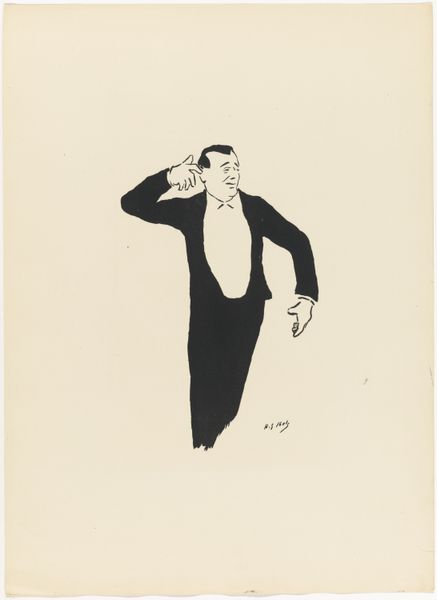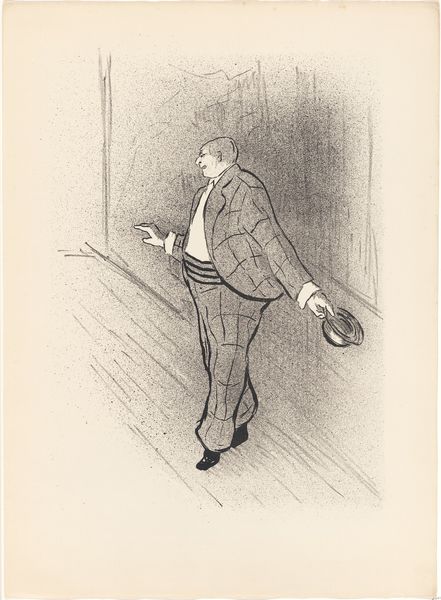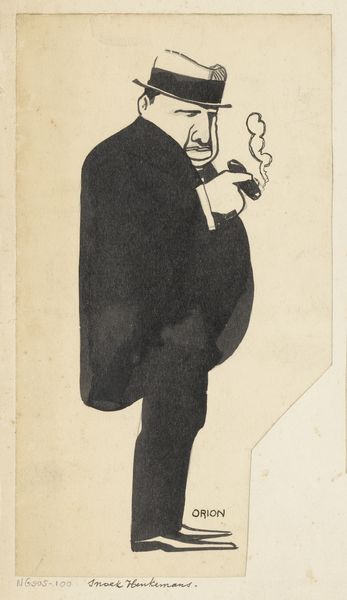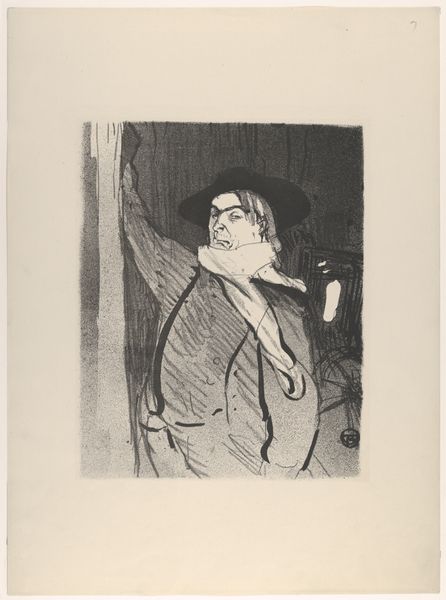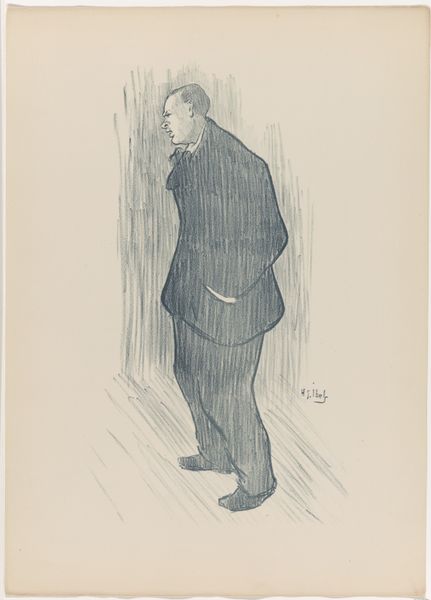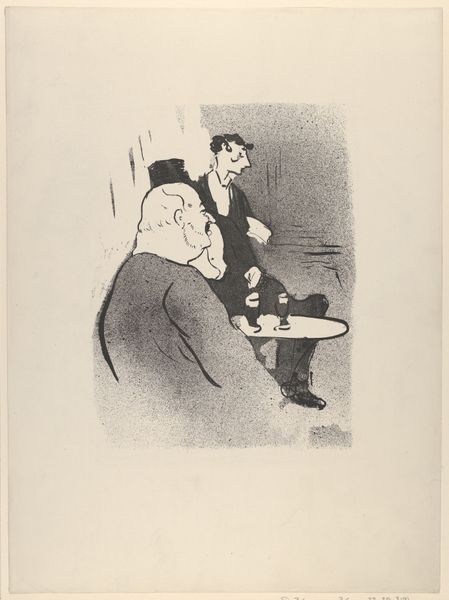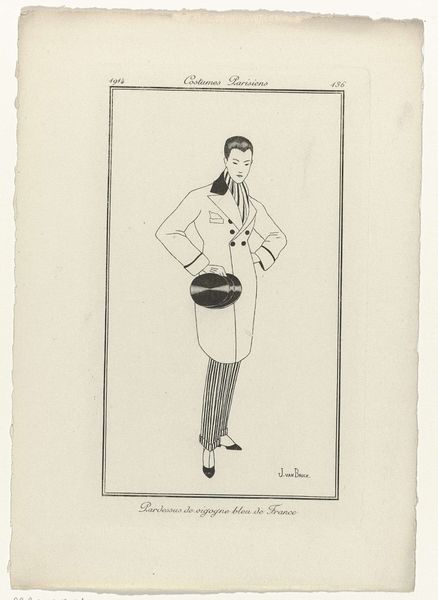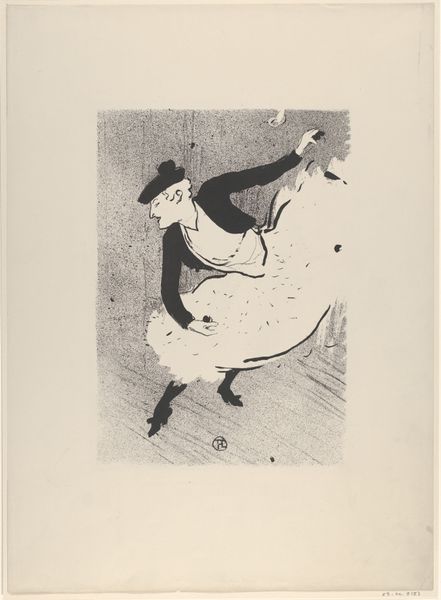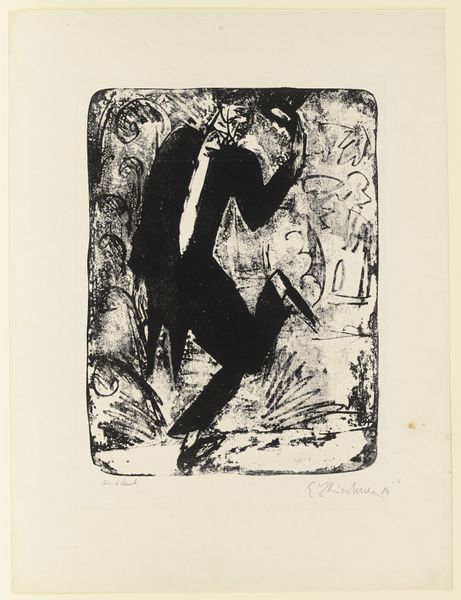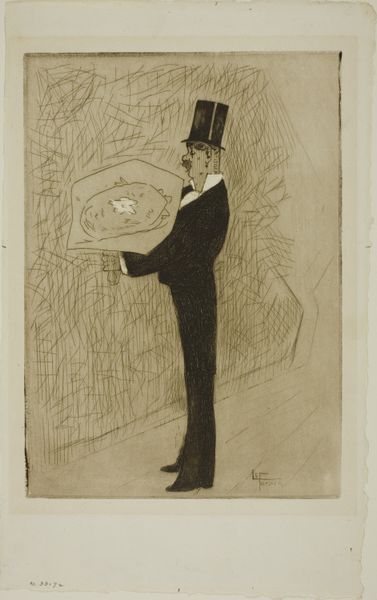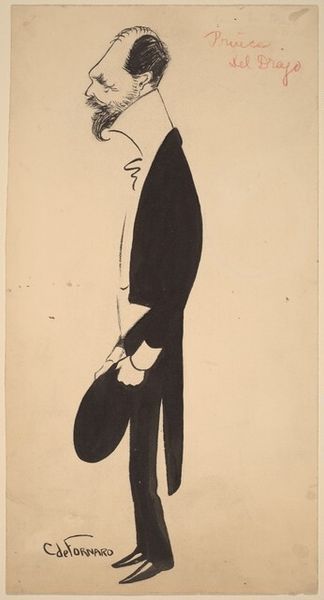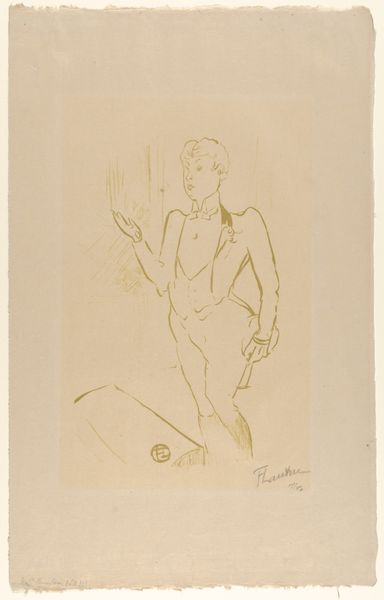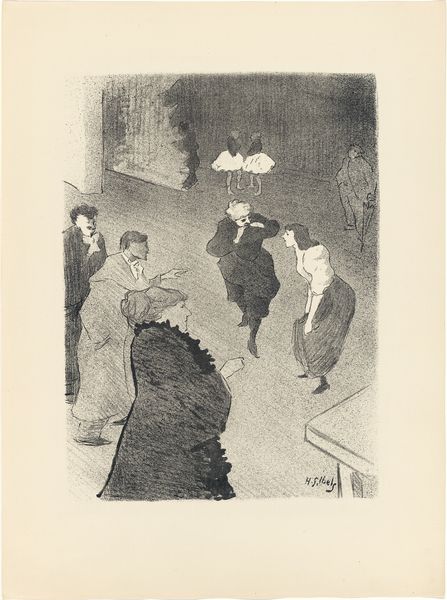
Dimensions: 282 × 220 mm (image); 435 × 320 mm (sheet)
Copyright: Public Domain
Curator: Here we have Henri-Gabriel Ibels’ lithograph, “Kam-Hill, from Le Café-Concert,” created in 1893. The work on paper currently resides here at the Art Institute of Chicago. Editor: The upward tilt of his head and arm gestures give the figure a striking sense of command on a brightly lit stage, don't you think? The stippling in the lithography certainly evokes the lively atmosphere of a cafe-concert. Curator: Indeed. Ibels’ choice of lithography, a relatively inexpensive and easily reproducible medium, is crucial to understanding the art's function. This was not meant for an elite audience, but rather a broader public engaged in the vibrant Parisian café culture. Editor: Note the striking simplicity in the rendering of the figure. The sharp, decisive lines describing the jacket and the contrasted shading indicating the stage floor; very economical but effective formal elements. Curator: It's worth considering the subject's role in this entertainment world. “Kam-Hill” was, presumably, a stage performer, perhaps even a caricature of one. The exaggerated pose might point to the spectacle of labor inherent in entertainment. The performer’s physical presence is emphasized, drawing attention to his efforts within the social and economic fabric of café society. Editor: True, yet it’s this very exaggeration of form that captures the *essence* of performance. The artist uses lines to guide our vision directly toward the head thrown back, further accentuating that open hand... These strategic gestures guide the reading. Curator: Perhaps. Yet consider the context: cafés as spaces of social exchange, even social climbing. Ibels, through accessible printmaking, is participating in the democratization of art, reflecting a specific moment in French history when art and entertainment became increasingly intertwined with commerce and leisure for wider populations. Editor: Still, there’s something enduring in the composition; how line and texture convey both weight and levity in such balance. Curator: It is through an investigation of materials and contexts such as these that we arrive at meaning in art and at that critical historical discourse. Editor: But without a focus on aesthetic intent—how colors speak, shapes play against each other, composition compels—art risks being reduced to a mere social artifact.
Comments
No comments
Be the first to comment and join the conversation on the ultimate creative platform.
